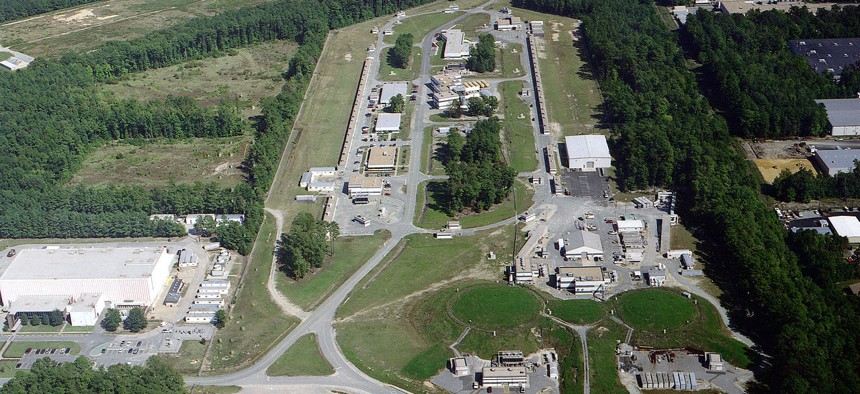Energy launches advanced data analysis effort to explore emerging tech, AI

Aerial view of the Thomas Jefferson National Accelerator Facility. Department of Energy photo
The Thomas Jefferson National Accelerator Facility will helm the High Performance Data Facility Hub, which looks to harness data sharing and supercomputing for research and development.
The Department of Energy selected the Thomas Jefferson National Accelerator Facility to serve as the head of its High Performance Data Facility Hub, the latest step in the agency’s plan to foster a strong computing infrastructure for advanced research and development initiatives.
Announced on Monday, the Jefferson Facility will work in partnership with the Lawrence Berkeley National Laboratory to build the HPDF Hub. The focus of the Hub will be to advance Energy’s Integrated Research Infrastructure program that looks to marry advanced computing with data management to facilitate new research in emerging technologies.
“High quality research data is the rocket fuel of the AI era and all other forms of emerging technologies,” said Geraldine Richmond, DOE’s under secretary for science and innovation. “The High Performance Data Facility will play a central role in the operation and success of the IRI program which is designed to serve the data and analysis needs of our many DOE national laboratory user facilities and more.”
Energy further envisions the HPDF Hub to seamlessly access the vast datasets from the agency’s previous experiments and simulations for researchers to reference.
One of the technologies the HPDF Hub will focus on is artificial intelligence. In the press release, Energy said that the Hub’s AI agenda will ideally lead to new approaches to existing problems in the field through improved data access.
The total cost of the HPDF program is estimated to run between $300 million and $500 million, which will be subject to the future availability of funding.
NEXT STORY: FDA forms new committee to advise on health tech



